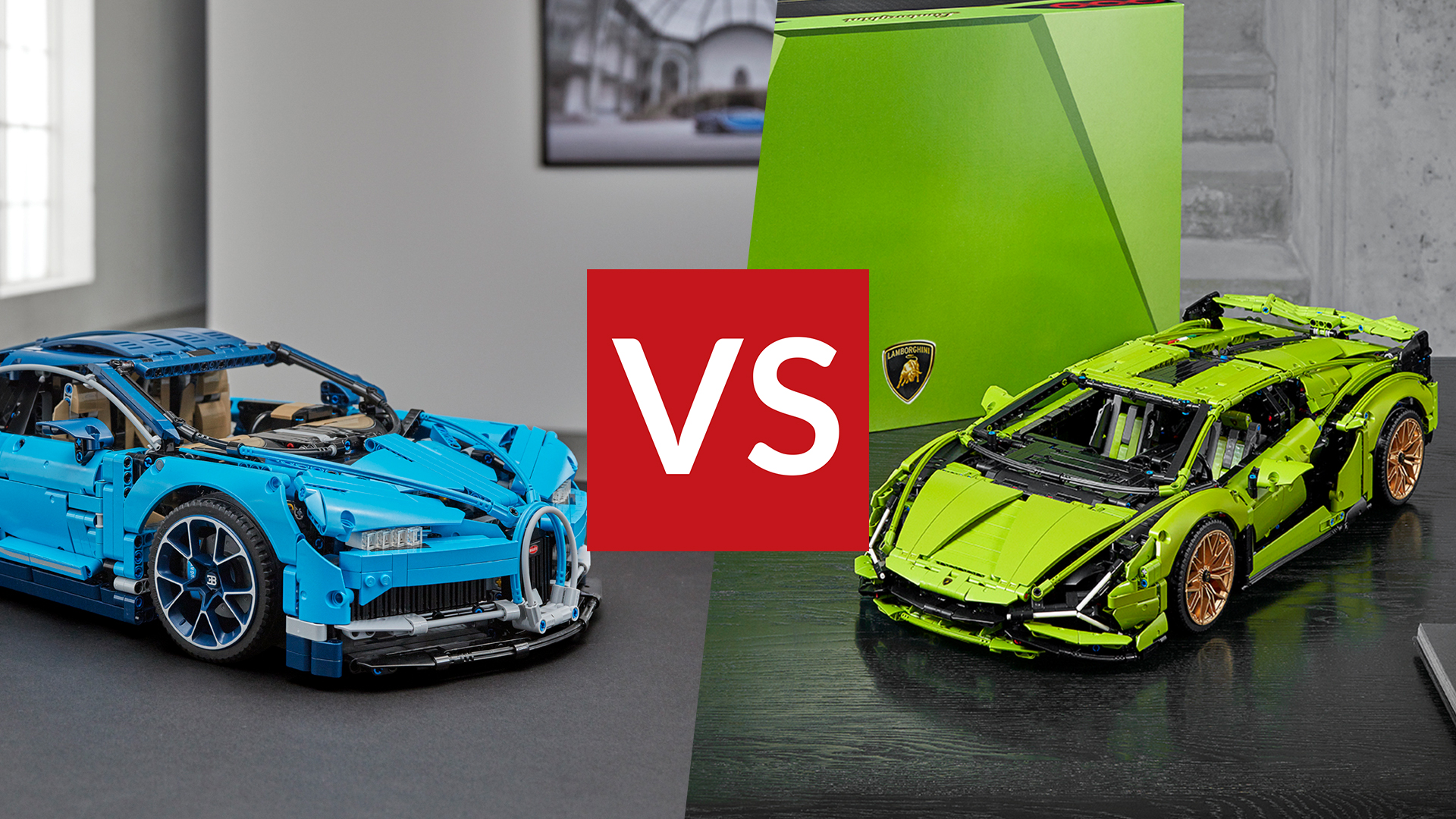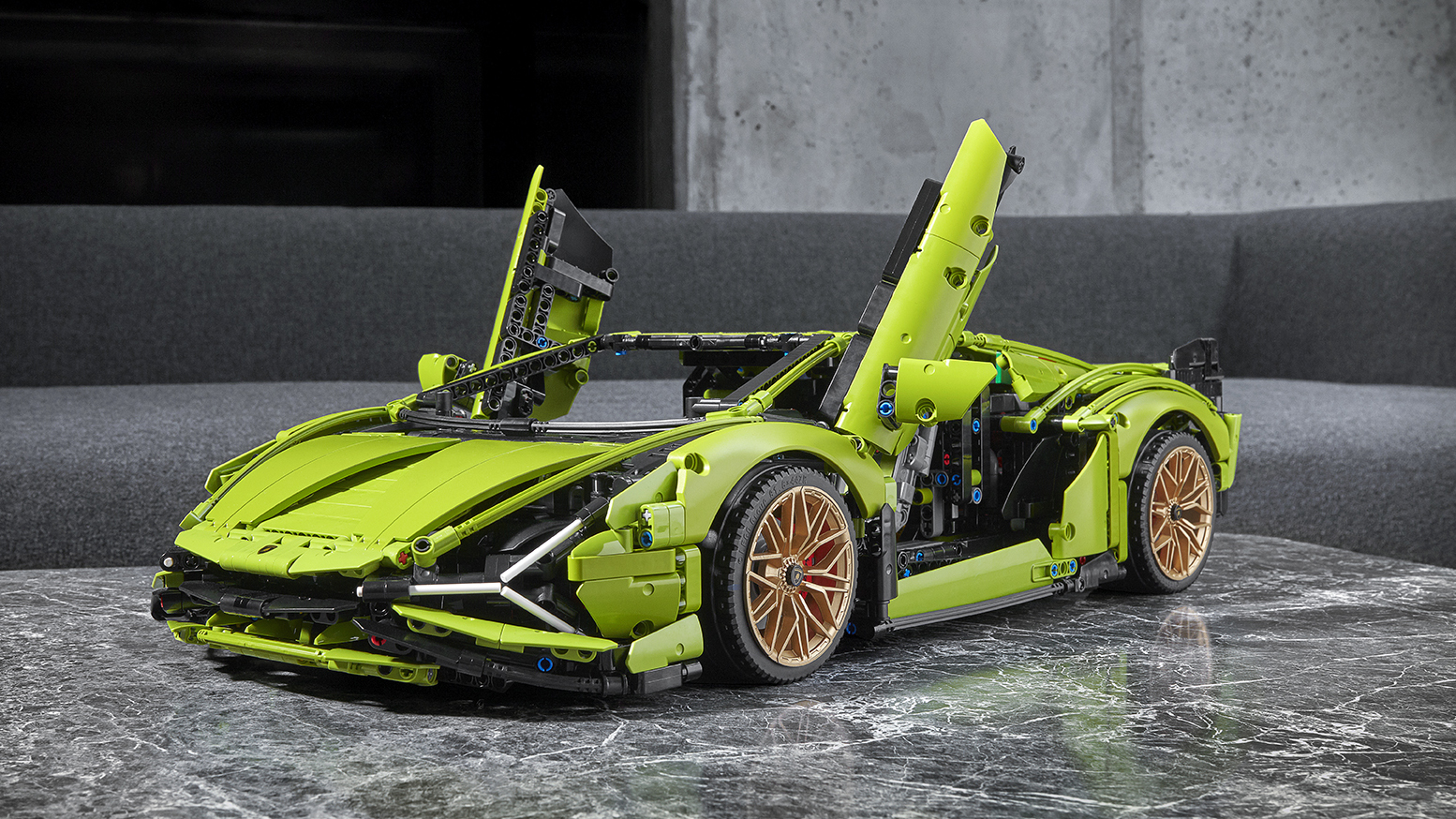Lego Lamborghini vs Lego Bugatti: which Technic set should you buy?
The Lego Lamborghini Sián and Lego Bugatti Chiron are two of the most desirable sets around, but which is the best buy?


Two of the best Lego sets released in recent years are the Lego Lamborghini Sián FKP 37 and the Lego Bugatti Chiron – both have garnered massive attention for how incredibly detailed they are, from the impressive looks to how the internal workings have been recreated, including the incredible engines powering both these machines.
They're both among the best Lego Technic sets, which means Lego – working with Lamborghini and Bugatti respectively – has put a huge amount of effort into getting the workings and the style of them correct.
But if you're a hypercar fan wondering which to buy, how do you choose between them? Here's what you need to know about them both, so you can buy the car of your dreams.
Lego Lamborghini vs Lego Bugatti: Price & release date
The Lego Lamborghini is the newer of the two models, and was released in June 2020. It costs £349.99/$379.99/AU$569.99 officially, which is pretty typical for a Lego set with 3,696 pieces.
The Lego Bugatti was released in May 2018. It officially costs £329.99/$349.99/AU$599.99, and with 3,599 pieces, that's right in line with the Lambo.
However, with the Lamborghini being newer, we haven't seen many big discounts on it yet, so you're likely to pay close to the official price. The Bugatti, on the other hand, has had some great discounts in recent years. It's featured a lot in our guide to the best Lego deals, because we've seen the price come down by up to 30% in big sales, making it incredible value.
That said, big discounts are starting to appear on the Lamborghini, so don't miss out if you see a great one! You can find the current lowest prices for both sets below.
Get all the latest news, reviews, deals and buying guides on gorgeous tech, home and active products from the T3 experts

Lego Lamborghini vs Lego Bugatti: Features & complexity
Lego says the Lamborghini is the more complex of the two models, rating is being suitable for ages 18+, while the Bugatti is suitable for 16+.
In practice, we don't think there's any meaningful distinction here. Both models get their complexity by having elaborate gearboxes and engines, as well as internal structures that need to hold the big, long finished model in one sturdy piece as well as allowing for the design to include realistic cockpits and get the gearbox and engine in the right places.
Both cars feature an eight-speed gearbox, which can be controlled using gear shifters in the cockpit. The engine in the Bugatti is a recreation of the real W16 power plant, while the Lamo has a V12. When you turn the wheels of the vehicles, the pistons in the engines move – and they move at a different speed depending on which gear you're in.
The steering wheel in the realistic cockpit turns the front wheels in both vehicles, and the also both have a moving rear spoiler. However, the Lambo is the only one to also include front and rear suspension, giving it a slight edge for in the ridiculous features competition.
Both have opening doors, though the scissor doors of the Lamborghini are obviously cooler as a matter of principle.
That said, the Bugatti has a fun trick of its own during the build – you put together the front and back separately, and then join them together. The reason is that this is exactly how the car itself is built. There's no good reason for doing it this way, other than to celebrate the real machine and how it's built. We love it.
However, this is maybe the single most awkward part of building either of these models – when building the Bugatti, we simply couldn't get the two halves to fit together, and couldn't work out why. Eventually, we realised that one of the many, many Technic pins wasn't quite fitted properly, and was sticking out a millimetre too far, blocking the whole thing.

Lego Lamborghini vs Lego Bugatti: Design & box
Both of these cars are made to feel like an event to build, and there's a huge amount of love lavished on them, including in the box. This isn't just some empty bit of cardboard with a load of bags in. All the space in the box is filled by smaller boxes, and they're printed with parts of the car – it's like an art book is printed right on the boxes.
And speaking of art books, the instruction manuals are full of details about creating these models, with gorgeous images and fascinating details.
And, happily, the size of the big boxes are designed to be just the right size for the finished cars, so if you need to put them away and in storage, they're well protected.
That's if you can bear to put them away, though. Both look absolutely incredibly, and the way Lego has made the hard shapes of Lego piece mimic the aerodynamic shape of the cars is truly impressive.
We think the Lamborghini probably just has the edge in terms of the final product looking especially sleek and cool. The Bugatti is amazing given the constraints of Lego pieces, but has more hard edges that should be smooth.
They're very close to being the same size when finished, too. The Lamborghini is 5 inches (13cm) high, 23 inches (60cm) long and 9 inches (25cm) wide. The Bugatti is 5 inches (14cm) high, 22 inches (56cm) long and 12.5 inches (32cm) wide.
Lego Lamborghini vs Lego Bugatti: Conclusion
Really, you could pick either of these and be happy. Obviously, if you prefer one car over the other, that makes it easy. Otherwise, they have largely the same cool features and number of pieces, and the end results are basically the same size.
The one main difference might be the price. Officially, they're essentially the same cost, but we've seen bigger discounts on the Bugatti, so if you want one for a bargain price, that might be the one you'll find. Either way, we know you'll be happy with them.

Matt is T3's former AV and Smart Home Editor (UK), master of all things audiovisual, overseeing our TV, speakers and headphones coverage. He also covered smart home products and large appliances, as well as our toys and games articles. He's can explain both what Dolby Vision IQ is and why the Lego you're building doesn't fit together the way the instructions say, so is truly invaluable. Matt has worked for tech publications for over 10 years, in print and online, including running T3's print magazine and launching its most recent redesign. He's also contributed to a huge number of tech and gaming titles over the years. Say hello if you see him roaming the halls at CES, IFA or Toy Fair. Matt now works for our sister title TechRadar.